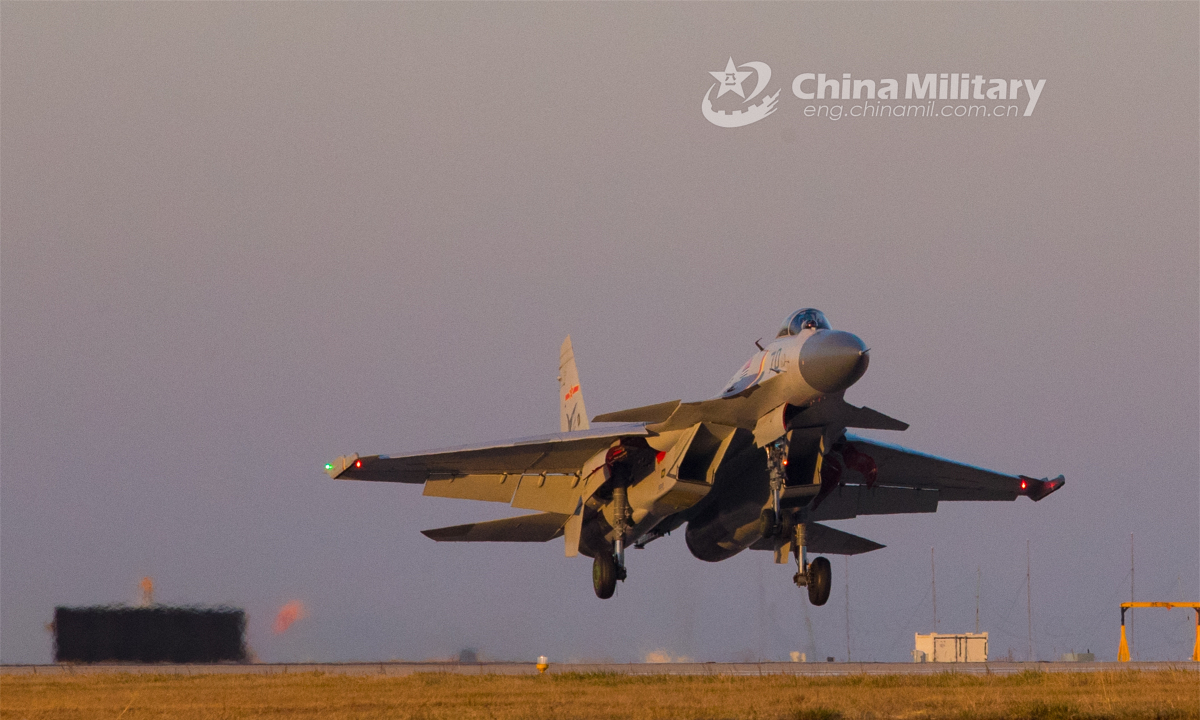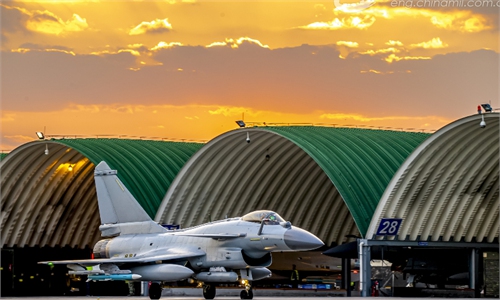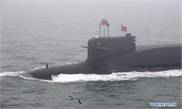
A fighter jet attached to a training base under the PLA Naval Aviation University takes off for a sortie during a flight training course in mid November, 2022. (eng.chinamil.com.cn/Photo by Jiang Tao)
A newly produced J-15 carrier-based fighter jet was fitted with what seems to be a pair of China's domestically developed engines, according to an official media report on Wednesday, which marked the 10th anniversary of the aircraft's first takeoff and landing on the Liaoning, China's first aircraft carrier.
This means that the Chinese aero engine has become reliable and powerful enough under demanding environments on aircraft carriers, reflecting that the Chinese engine has become mature and has likely surpassed its foreign counterparts, experts said.
Celebrating the J-15's first takeoff and landing on the aircraft carrier Liaoning 10 years ago, a report by China Central Television (CCTV) on Wednesday showed the carrier-based fighter jet's production line at Shenyang Aircraft Corp and a J-15 undergoing calibration for test flights.
Calibration is done at the end of the production process, as the aircraft would need to complete a series of checks before and after a test flight as well as before its delivery to the military, CCTV said.
A close-up shot of this J-15 in the report showed that it was fitted with what appeared to be a pair of Taihang engines, Shanghai-based news website eastday.com reported.
The WS-10 Taihang is a series of turbofan engines with high thrust and high thrust-to-weight ratio independently developed by China, and they have been used by a number of China's warplanes including the J-10, J-11, J-16 and J-20 fighter jets, but carrier-based J-15s used to use Russian Al-31F engines, Fu Qianshao, a Chinese military aviation expert, told the Global Times on Wednesday.
This is because carrier operation is very demanding, as it requires the engines to have a higher acceleration rate and withstand stronger impact during takeoff and landing, as well as face harsher working environments including high saline and high humidity, which could cause corrosion and negatively affect the engine's reliability and lifespan, Fu said.
Now that the J-15 is switching to use domestically developed engines, it shows that this type of engine has become mature, safe, reliable and generally a better engine than the original Al-31F, Fu said. "It is likely at the same level or even slightly better than its US counterpart."
Five variants of the Taihang engines were displayed at the Airshow China 2022 held in Zhuhai, South China's Guangdong Province in early November, as its maker Aero Engine Corp of China said that the Taihang engine has kept receiving improvements and upgrades, and its performance, reliability, safety, stealth capability, power extraction, environmental adaptability, endurance and thrust vectoring - among other factors - have all received technical boosts.
This is expected to comprehensively enhance the aircraft's survivability and combat capabilities, and it has realized the complete independent support of domestically developed engines.
In addition to the domestically developed engine for the J-15, Chinese military observers are eagerly anticipating new information on new carrier-based aircraft, including a catapult-launched and upgraded version of the J-15, a next-generation carrier-based stealth fighter jet allegedly called the J-35, a carrier-based early warning aircraft allegedly named the KJ-600 and a carrier-based version of the JL-10 advanced trainer, following the launch of the country's third carrier, the Fujian, which is for the first time equipped with electromagnetic catapults.




